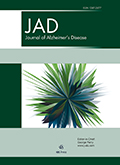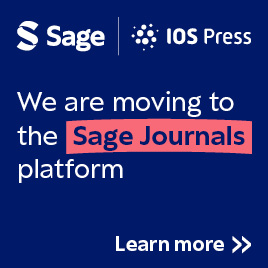Authors: del Ser, Teodoro | Steinwachs, Klaus C. | Gertz, Hermann J. | Andrés, María V. | Gómez-Carrillo, Belén | Medina, Miguel | Vericat, Joan A. | Redondo, Pilar | Fleet, David | León, Teresa
Article Type:
Research Article
Abstract:
This pilot, double-blind, placebo-controlled, randomized, escalating dose trial explored the safety and efficacy of tideglusib, an inhibitor of glycogen synthase kinase-3, in Alzheimer's disease (AD) patients. Thirty mild-moderate AD patients on cholinesterase inhibitor treatment were administered escalating doses (400, 600, 800, 1,000 mg) of tideglusib or placebo (ratio 2 : 1) for 4, 4, 6, and 6 weeks, respectively. The primary objective was to evaluate the safety and tolerability of tideglusib with strict criteria for drug escalation or withdrawal. Mini-Mental Status Examination (MMSE), Alzheimer's Disease Assessment Scale-cognitive subscale (ADAS-cog+), word fluency, Geriatric Depression Scale (GDS), and a final Global Clinical
…Assessment (GCA) were assessed as secondary objectives. Treatment was well tolerated. Adverse events were as frequent in active and placebo groups, except for some moderate, asymptomatic, and fully reversible increases (>2.5 × ULN) of serum transaminases in 6 active cases (p = 0.001). Tideglusib produced positive trends in MMSE, ADAS-cog, GDS, and GCA without statistical significance in this small sample. Responders in MMSE were significantly higher in the active group (p = 0.05). Patients escalated up to 1000 mg/day had a benefit of 1.68 points in the MMSE and 4.72 points in the ADAS-cog+ when compared to placebo. This small pilot study provides valuable safety and efficacy estimates for the treatment of AD patients with tideglusib, currently being confirmed in a larger clinical trial. Due to escalating doses and the small sample size, this trial provides insufficient evidence to support or reject a benefit of tideglusib in AD.
Show more
Keywords: Alzheimer's disease, clinical trial, glycogen synthase kinase-3, pharmacological treatment, tideglusib
DOI: 10.3233/JAD-2012-120805
Citation: Journal of Alzheimer's Disease,
vol. 33, no. 1, pp. 205-215, 2013
Price: EUR 27.50




